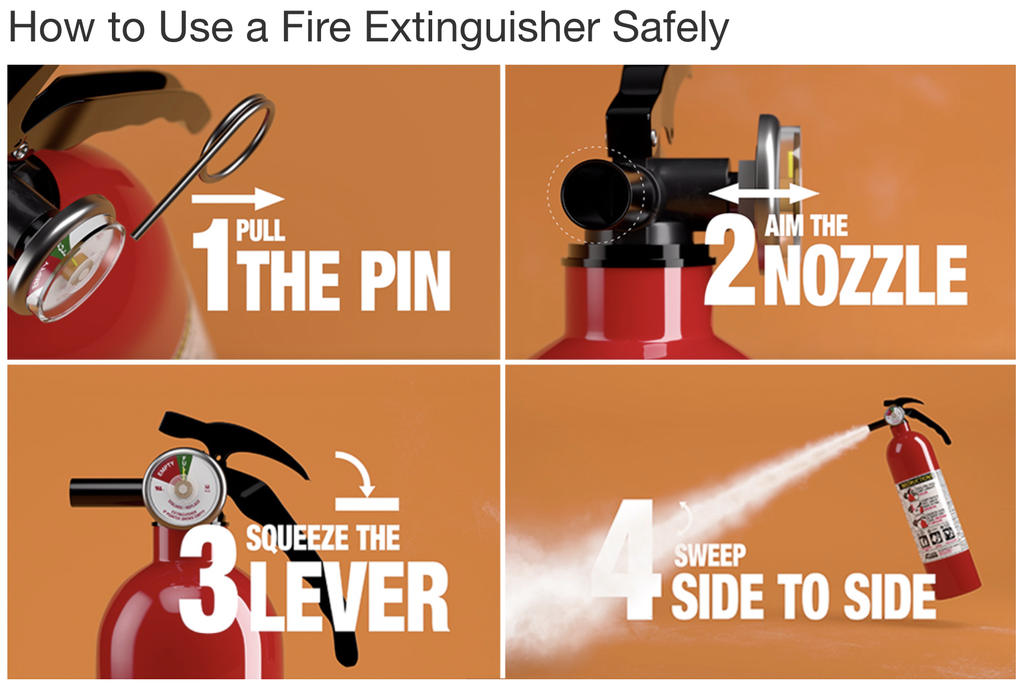| Each year U.S. fire departments respond to more than 300,000 home fires. Those start in all sorts of ways, from people falling asleep smoking to setting the Christmas tree ablaze. But about half start at the kitchen stove, according to the National Fire Prevention Association (NFPA).
“In approximately 80 percent of all fire incidents, a simple portable fire extinguisher is all that is needed to put out the fire,” says Thaddeus Harrington, public affairs specialist with the U.S. Consumer Product Safety Commission. “Studies have also shown that 60 percent of fires go unreported. This means that the fire is not severe and can be handled easily with a fire extinguisher.”
Those are decent odds for preventing a catastrophic home fire, provided you have a fire extinguisher at hand and know how to use it. Here’s how to find the right one to keep your family and home safe.
** What Is a Residential Fire Extinguisher **
Residential fire extinguishers handle common household mishaps, from grease fires to space heaters gone awry. The main differences between a residential extinguisher and a commercial one are size and durability. Commercial settings also need to deal with a wider variety of combustible sources, as well as larger-scale fires.
Residential grade usually comes with a plastic handle and trigger assembly, whereas the commercial grade will come with a metal assembly.
** Types of Residential Fire Extinguishers **
Extinguishers are defined by classes, which describe what type of fire they can subdue — say, an electrical fire versus a flaming curtain.
It’s important to use the right class or the situation can quickly become a lot worse. Trying to put out a grease fire with a water-based extinguisher will make it splash and spread. Because of that, the most common residential extinguishers combine classes A, B and C, so they’re versatile and foolproof.
ABC
Unless you’re really into fire extinguisher technology or work with unusual flammables, the simplest way to go is a combination ABC class.
The ABC extinguisher is able to handle the most common type of fires, being trash, wood, paper, liquids and electrical equipment in residential and commercial settings.
The National Fire Protection Association (NFPA) recommends a fire extinguisher on every level of your home as well as in garages, kitchens, basements and near exits to create an exit pathway.
The NFPA recommends primary and secondary fire extinguishers for different areas of your home. Supply one fire extinguisher for each level of your home, spaced no farther than 40-feet apart.
** How to Use a Fire Extinguisher Safely **
A fire extinguisher showing the directions of how to use it.
When using all types of fire extinguishers, keep the acronym PASS in mind.
"P" stands for pull the pin.
"A" stands for aim the nozzle toward the base of the fire.
"S" stands for squeeze the lever slowly.
"S" stands for sweep the nozzle from side-to-side, while moving toward the fire.
The NFPA encourages portable multi-purpose fire extinguisher use when:
* The fire is confined to a small area, such as a wastebasket, and is not growing.
* Everyone has exited the building.
* The fire department has been called or is being called.
* The room is not filled with smoke.
Tip: Keep your back to a clear exit when you use the device so you can make an easy escape if the fire cannot be controlled. |




